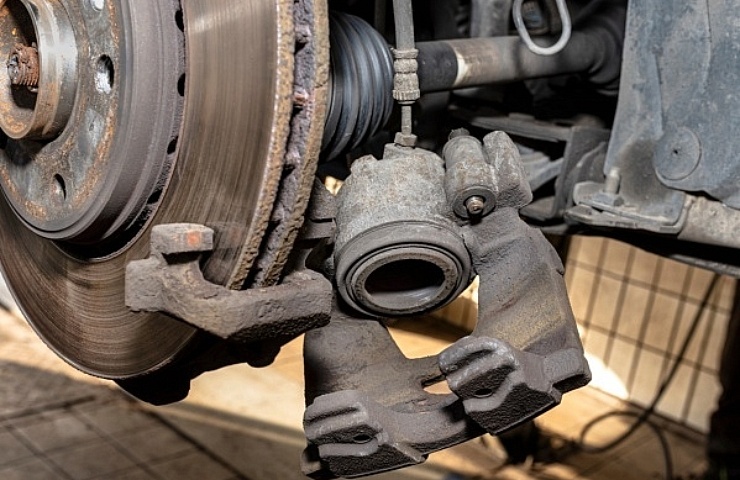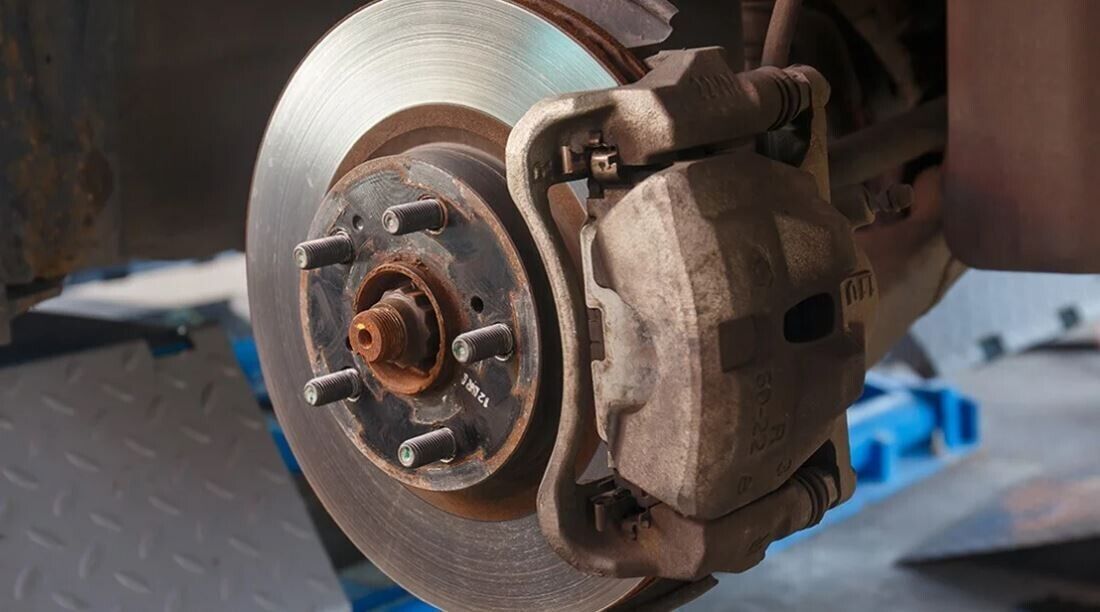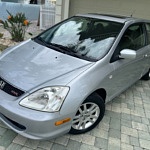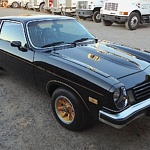Contents
What Are the Symptoms of a Sticking Caliper
The term “sticking” means that the brake caliper fails to release, even when your foot is off the brake pedal. A stuck caliper continually applies friction between the brake rotors and pads. This condition leads to brake drag.
Shop now for brake calipers- The vehicle pulls to one side. It pulls to the side of the stuck brake caliper because that particular brake remains applied.
- The pedal remains depressed. The brake pedal may stay down for a few seconds after taking your foot off of it. Eventually, it does come back up, but the process is slower.
- Difficulty stopping. If the caliper sticks, it will be harder to stop the vehicle. The brakes heat up from the sticking caliper. This condition causes brake fade, further reducing stopping power.
- High-pitched whine. The sound of a sticking caliper differs slightly from the squealing of bad brakes. Any high-pitched whine while applying the brake pedal indicates a sticking caliper. You may also feel vibration.
- Burning smell. As the caliper gets stuck in the applied position, you may notice smoke and a burning smell. These problems arise because of increased heat. In extreme cases, this can cause a fire. The excess heat can also warp brake rotors.
Inspect the brake calipers at the first sign of these problems. If you lack experience, take your vehicle to a qualified repair shop.
What Causes a Brake Caliper to Stick?
When a caliper fails, multiple issues could lead to its demise. Here are some of the most common causes.
- Defective slides. The brake caliper contains grooves meant to secure and move the brake pads inward when you depress the brake pedal. The brake pad shims can get caught in the grooves if there’s built-up debris, making them unable to slide, leading to a sticking caliper.
- Lack of lubrication. The slide pins on the caliper bolts must remain lubricated. That’s why each bolt contains a rubber boot for lubrication. When the boot tears, lubrication suffers, and the caliper sticks.
- Defective piston/seal. The caliper piston must fit perfectly in the housing, or it will bind to the caliper after the pedal is released. A bad piston is often due to a manufacturer defect or a low-quality remanufactured caliper.
- Worn brake pads. If the pads aren’t replaced when worn, the caliper overheats from the extra friction between the pads and the rotors. This heat leads to a seized caliper.
- Dirt and debris. It’s normal for dirt and road debris to infiltrate the brake system. If the caliper piston seals or dust boots experience contamination, movement of the caliper piston becomes restricted.
- Corrosion. The caliper can get stuck when the slide pins or pistons corrode. This condition is more common in climates with severe winter weather because of the road salt or near the beach with its salty, humid air.
Without a brake inspection, it would be impossible to know what caused the sticking calipers on your vehicle. Yet, it’s crucial to determine the cause to prevent it from happening again.
How to Fix a Sticking Brake Caliper
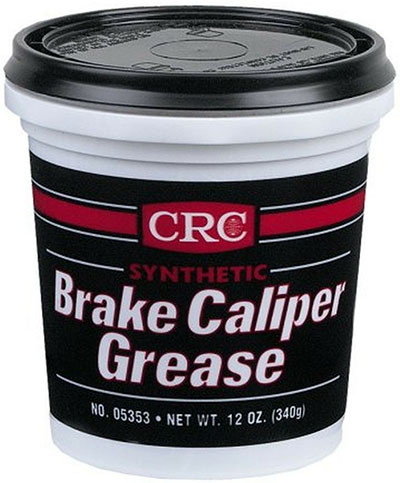
Here are the basic steps.
- Jack up the car to access the sticking caliper.
- Support the jack with a jack stand and chock a wheel to keep the car from rolling.
- Remove the wheel.
- Clean and lubricate the brake pads.
- Clean the brake caliper.
- Lubricate the caliper, slides, and pins.
- Replace the caliper, brakes, and wheel.
If the caliper remains seized or stuck after this process, you must either rebuild or replace it.
Brake Caliper Rebuild vs. Replace
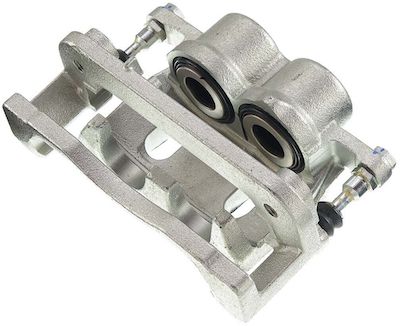
If your caliper is corroded, you can buy a used one. You can rebuild it with seals, but you won’t know the condition of the caliper until you start rebuilding it. There’s always the chance it’s corroded more than your current caliper.
Shop now for brake caliper rebuild kitsIf you have the extra money and want a simple fix, replacing the caliper with a brand-new one is the best choice. You won’t have to worry about it getting stuck again, and you don’t need to spend time working on the old caliper.
Is There a Temporary Fix?
If you’re on the road, there are some things you can do to unstick the caliper temporarily. The first option is to try freeing the caliper by pumping the brake pedal repeatedly.
If you can pull over to the side of the road, you may be able to put a small amount of lubricant on the caliper to get it unstuck. However, this isn’t going to resolve the problem long term.
Or, you can hit the caliper gently with a hammer. This process requires pulling into a safe location and jacking up the vehicle. By hitting the caliper gently, you may be able to knock it loose. There’s also the chance you’ll hit it too hard and damage it.
Your best bet is to pull into a repair shop and have the caliper fixed.
Is It Safe to Drive With a Stuck Brake Caliper?
The caliper is responsible for applying the brake pads to stop the vehicle. When stuck, the brake pad cannot disengage from the rotor, causing the pads to drag.
If you drive in this condition, the brakes lock up or remain applied, making it much more difficult to control the vehicle. The stuck caliper also puts more stress on the transmission, leading to premature failure.
For these reasons, getting the vehicle to a safe location as soon as possible is best. We never recommend continuing to drive with stuck calipers.
Shop now for brake calipers
